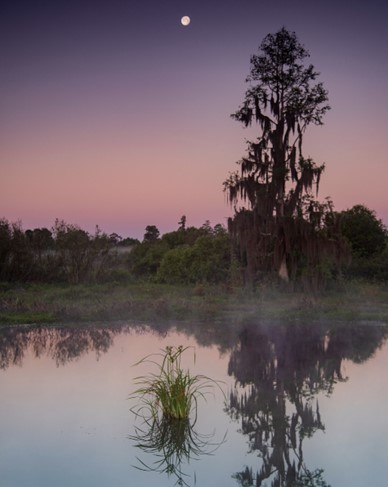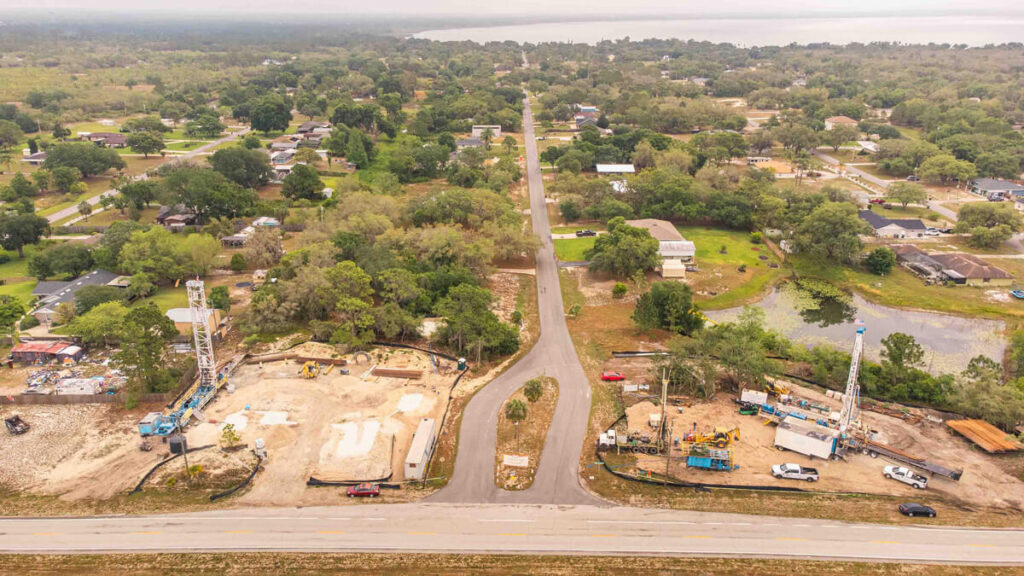April is Water Conservation Month, which makes it a good time to talk about Polk County’s water forecast and the Polk Regional Water Cooperative (PRWC). The PRWC, formed in 2016, is made up of Polk County and 15 municipal governments. Its goal is to plan, develop and provide a high-quality potable water supply for the residents of Polk County. Primarily, the PRWC is working to develop alternative water sources.
Why is Florida Water Conservation Important?

Florida water conservation is important for the future of Polk County. You might ask why we need alternative water sources. After all, it seems like there’s plenty of water to go around. It’s always easy to get a drink of water, right?
Polk County is the fastest growing county in the U.S. Around 82 people are moving here every day. By 2045, the county may need an extra 32 million gallons a day of “alternative” water sources to keep up with demand.
The Upper Floridan Aquifer currently provides the majority of water to Polk County, Florida. However, it is in danger of being overused. In addition to water shortages for residents, this can have adverse impacts to lakes, wetlands and natural systems.
What is the Polk Regional Water Cooperative?
The Polk Regional Water Cooperative (PRWC) is a non-profit, special district of the State of Florida. It has been tasked with ensuring Polk County residents have access to clean, safe water for decades to come.
Recently, the PRWC shared with the Board of County Commissioners that two of its projects are on track to provide the county with an additional 24 million gallons of water per day by 2045. These projects include the Southeast Wellfield and the West Polk Wellfield.
How will the PRWC secure more clean, safe water from the Floridan Aquifer?

The PRWC’s water production projects involve extracting usable, safe water by tapping the Lower Floridan Aquifer. This requires digging significantly deeper into the earth than the county has traditionally had to do. The drills at these sites go down to depths of 2,000 feet below the earth’s surface. This is much deeper than the several hundred feet needed for the Upper Floridan Aquifer.
By the time the projects are completed in 2029, design and construction is expected to cost about $650 million. A large portion of the funding is coming from state and federal grants. Drawing and treating water from the Lower Floridan Aquifer is complicated. This process will ultimately lead to higher costs for customers.
Here’s how you can conserve water for Water Conservation Month and beyond
Do your part to help with these three ways to conserve water.
- Check for leaking faucets and pipes. You can save gallons of water per day by fixing dripping faucets.
- Only run your dishwasher and washing machine when they are full. This is a great way to reduce your water bill and use water efficiently.
- Avoid watering plants or running sprinklers in the middle of the day when the water will evaporate quickly. This will reduce the amount of water you use outdoors. And your plants will thank you too.
Visit Polk County Utilities Programs and Rebates to learn how you can save money by reducing your water consumption.